How to Cook With Coconut Products: Milk, Oil, and More
What other fruit can be made into oil, water, butter, flour, sugar, milk, and flakes?

All those coconut products. (Photo: James Ransom)
Discovering coconut’s versatility can take you from feeling stiff and nervous in the kitchen to finding a flow and unabandoned creativity — especially for those with dairy-limitations (like myself). Coconut offers a creamy substitute for more traditional cow milk and butter. And the nutty, sweet flavor of coconut products work well across the food spectrum, from candy bars to roasted sweet potatoes.
While most of the world has long appreciated this hairy ball of meat and milk for its culinary, nutritional, and medicinal abilities, American consumers only just recently fully embraced it as a healthy addition to the kitchen. As coconut’s popularity has grown, so have the many coconut-based options on store shelves. There are so many these days, it can be confusing to know what’s what and how to cook with them, so let’s crack this fruit open, break down its many parts, and find out what coconut can do.
Here’s all you need to know about—plus recipe ideas that use—coconut oil, milk, milk beverage, water, flakes, flour, butter, and sugar:
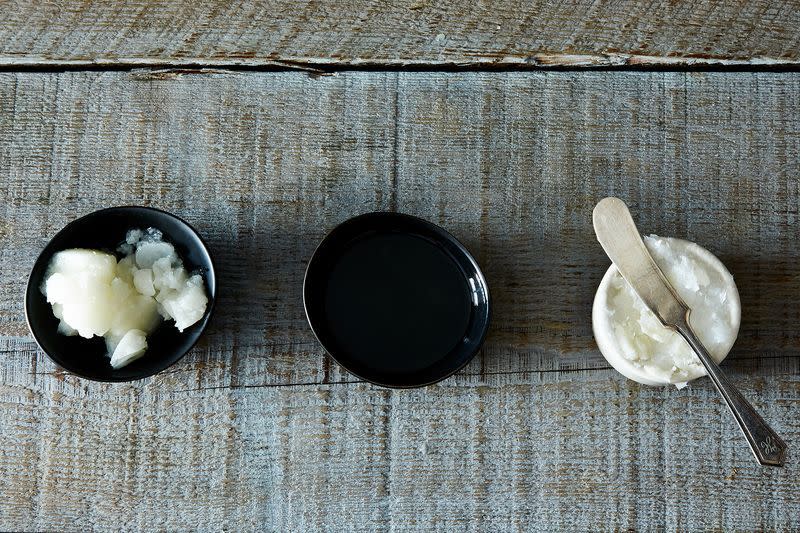
Coconut oil in various stages of melted. (Photo: James Ransom)
Coconut Oil
What it is: Coconut oil is by far the most confusing of the coconut products, as there are a slew of labels and varieties to choose from—the most common (at least commercially) being “refined” and “virgin.” The simple synopsis is that all coconut oil comes from coconut meat. How it gets extracted, however, is where we get differences in quality and usage.
Refined coconut oil starts with copra, or dried coconut meat, that gets bleached for sanitation purposes and deodorized to neutralize taste and smell. Some companies use chemicals to extract more oil and elongate shelf-life, while others use all natural processes (like clay bleaching and steaming) and physical means of extraction to achieve similar results, so read labels carefully.
Virgin oil (also labelled as “pure” or “unrefined”) starts with raw coconut meat instead of copra, which then gets quickly dried before expelling the oil or pressed to make coconut milk, which gets separated and strained to extract the oil—no bleaching or deodorizing necessary.
Refined coconut oil will have a higher smoke point (about 400° F) and a more neutral taste. Virgin oil will have a medium smoke point (about 280° F) and a richer coconut flavor. There is no difference between “Extra Virgin Coconut Oil” and “Virgin Coconut Oil”—it’s just a marketing trick. And as far as labels that say “cold-pressed,” “expeller-pressed,” and “centrifuged,” these terms simply refer to methods of extraction.
How to buy it: Find coconut oil in the oil section of the grocery store. You’re looking for the pure white kind labeled “virgin” or “refined”—they have good-for-you saturated fats. Skip anything that includes chemicals, trans-fats, or the words “bleached,” “deodorized,” and “hydrogenated.”
How to store it: Coconut oil will stay good and solid at room temperature for two years. Like most oils, though, store the jar in a cool area, far from the oven or a sunny counter. Coconut oil will melt at 76° F, but when cooled, it will harden again.
How to use it: Slightly sweet and nutty, coconut oil works in a 1:1 ratio in any recipe (both sweet and savory) that calls for butter or oil. Since it is solid at room temperature, it also works as a shortening substitute; simply swap 1 part shortening with ¾ coconut oil. Just remember that refined and virgin oils have different smoke points, meaning refined coconut oil works for high-heat cooking (like frying) and virgin coconut oil is better for lower heat applications (like sauteing and baking and melting on popcorn).
To melt the oil, place the measured amount in a small bowl and submerge the bottom in warm water. You can also use a microwave. For flaky applications, like this Perfect Vegan Pie Crust, simply use the measured amount straight out of the jar in its solid form.

Perfect Vegan Pie Crust. (Photo: James Ransom)

Crispy Coconut Kale with Roasted Salmon and Coconut Rice. (Photo: James Ransom)
Some recipes to try:

From left to right: canned coconut milk, coconut milk beverage, and coconut water. (Photo: James Ransom)
Canned Coconut Milk
What it is: Let’s talk about coconut anatomy: There’s the hard, outer shell; followed by the inner, creamy flesh; and finally the watery interior. So where’s the milk? Like oil, it comes from the flesh, which gets grated and boiled until a thick coconut milk/cream rises to the top. The process gets repeated to create a thinner milk. Most canned coconut milks contain a mixture of both thick and thin milks, as well as some water. You can also make coconut milk on your own by blending the fresh coconut meat with water and straining it.
How to buy it: Coconut milk, a combination of coconut meat and water, usually resides in the foreign foods aisle, available in cans, resealable cartons, and even powdered form (great for hot cocoa). There full fat or “lite” options, the latter of which will give you a thinner cooking liquid.

Coconut milk. (Photo: James Ransom)
How to store it: Canned coconut milk may be kept at room temperature until use. Once open, keep in an airtight container for up to 7 to 10 days in the refrigerator. Pour leftovers into an ice cube tray and freeze for future smoothies and shakes.
How to use it: If a recipe calls for coconut milk, it wants you to use this thicker, canned kind (not the beverage, which we’ll discuss in a second). For those new to coconut, start with a curry. Then get adventurous with braised greens, coconut jam, and mochi. Some recipes call for just using the cream—the top layer of the milk—which means you place the can of coconut in the fridge overnight and then skim off the thicker part to cook with. You can, for example, turn it into whipped cream.
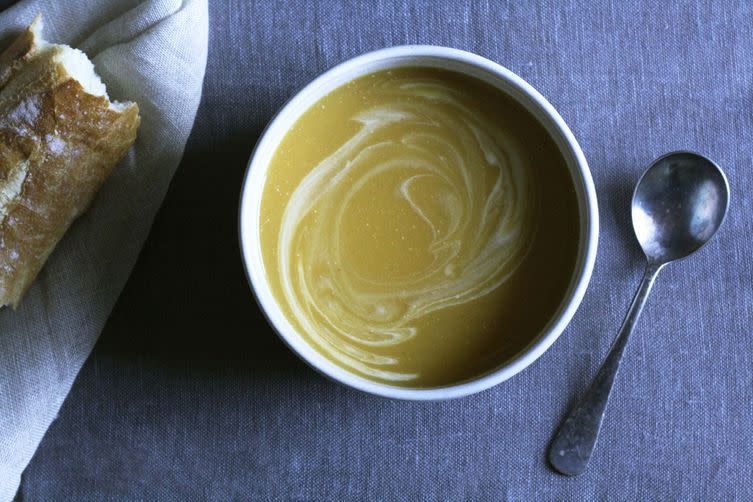
Butternut Squash Soup with Miso and Coconut. (Photo: Eric Moran)
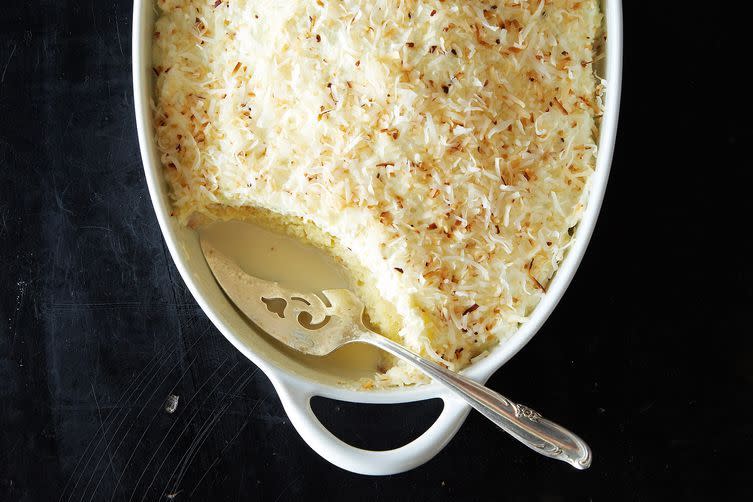
Coconut Tres Leches. (Photo: James Ransom)
Other recipes to try:
Related: But wait, there are even more recipes.
Coconut Milk Beverage
What it is: Like soy, oat, and hemp “milk,” coconut beverages have joined the ranks of the dairy-alternative aisle. It is a much thinner and more watery version of canned coconut milk. And unlike cow milk, it does not contain calcium and vitamin D.
How to buy it: Find beverage coconut milk in both the refrigerated dairy section as well as the unrefrigerated, dairy-alternative section. Many brands come unsweetened or with added sugar and flavors, like vanilla and even holiday eggnog. When using in a recipe (versus drinking it), stick with the unsweetened stuff and add flavors while you cook.
How to store it: Same directions as the canned stuff.
How to use it: Swap it 1:1 in any recipe that calls for cow milk.

Avocado Sea Salt Shake. (Photo: James Ransom)
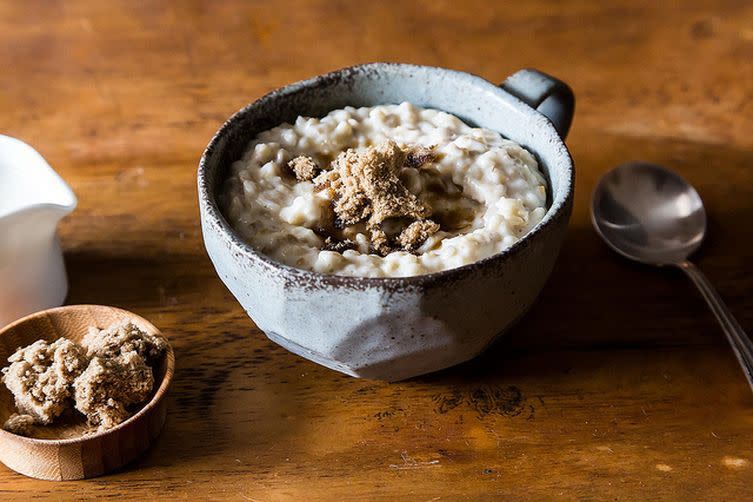
April Bloomfield’s English Porridge. (Photo: James Ransom)
Some ideas for how to use it:
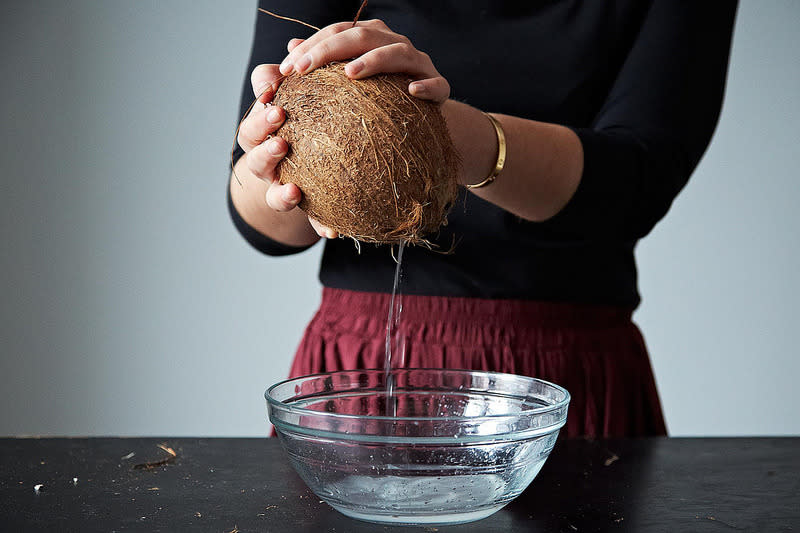
Draining the coconut. (Photo: James Ransom)
Coconut Water
What it is: Coconut water is the clear liquid found inside a young, green coconut. Refreshing and slightly sweet in taste, it is healthy alternative to sugary drinks and fruit juices.
How to buy it: Sometimes a cabana boy will crack open a coconut and let you sip straight from the source. Other times, you have to buy a can or bottle in the drink aisle of the store. Just be aware that, when buying from the urban jungle, some of these products come with added flavors and, thus, added sugar; some are pasteurized; and some are made from concentrate (i.e., reconstituted with water). So while fresh is best, as long as you buy the most natural and non-flavored waters, you will still get most of its beneficial minerals.
How to store it: Store like any other canned or bottled drink—at room temperature and then refrigerated once opened for 24 to 48 hours.
How to use it: While coconut water may be most popularly known for its electrolytes, it is so much more than a sports drink. Clear and cream-free, coconut water can add a refreshing coconut kick to tipsy Arnold Palmers or homemade berry popsicles.

From left to right: Coconut flakes, shredded coconut, coconut sugar, and coconut flour.
Coconut Flakes
What it is: Coconut flakes, sometimes referred to as “dessicated coconut,” come from dried and grated coconut meat. Coconut flakes can be found in a range of sizes, from a snow-like powder, to sprinkle-shaped shreds, to larger chunks. And as if this wasn’t enough, they also come sweetened and unsweetened; toasted (although you can always toast it yourself—see below); and, now, even packaged as flavored, snacking chips. Be sure to read your recipe before heading to the store and buy according to your coconut flake needs.
How to buy it: Coconut flakes will be found either in the bulk bin area or with the baking supplies.
How to store it: When kept in an airtight package and a cool location, coconut flakes will stay good for 4 to 5 months. You can also keep them in the freezer for up to a year.
How to use it: Often known for their work as a filler for ambrosia and fruit salads, but they can also be crispy coatings to Coconut Tres Leches, Crispy Coconut Kale, and potentially even these Pistachio-Crusted Chicken Tortas (just add some flakes to the blender when making the nut crumbs). Some recipes will ask you to toast the coconut first, which you can do by put the coconut in a 350° F oven for 6 to 8 minutes or in a hot, dry skillet for about 5 minutes. Toasting will intensify the flavor, add a smoky taste, and give those flakes a brilliant, golden hue.

Around-the-World Coconut Popcorn Mix. (Photo: James Ransom)

Grapefruit with Vanilla-Honey and Coconut. (Photo: Emily Vikre)
Some recipes to try:
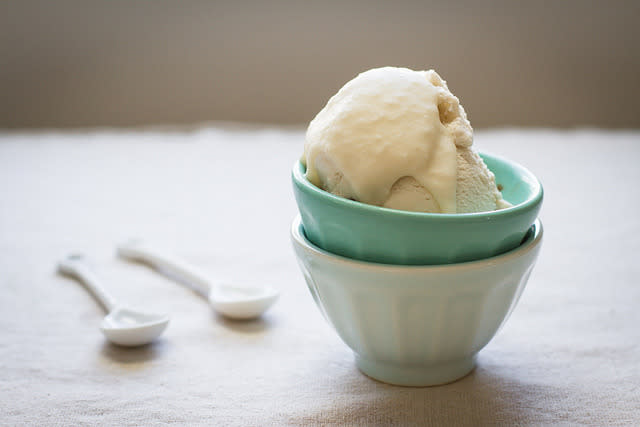
Homemade coconut butter. (Photo: Ashley McLaughlin)
Coconut Butter
What it is: When coconut oil and coconut meat grind together, they form a peanut butter-like paste called coconut butter (also known as coconut manna). It provides a richer coconut flavor than the oil and texturally feels waxy when cold and creamy when warm.
How to buy it: Find it in the nut butter aisle or in the baked goods aisle. Or, make your own.
How to store it: Like coconut oil, the butter is solid at room temperature. However, like other nut butters and tahini, the oil and fatty parts may separate. To combine, simply warm the whole jar in a bowl of warm water (or lay it on its side). Then, use a knife or chopstick to stir together.
How to use it: Think of coconut butter as a “topper” versus a “cooker.” Spread on crackers or a slice of Black Sesame Banana Cake. Stir a little into your coffee as creamer. Let it melt over Sweet Potato Waffles. Or make coconut herb butter and add to Merrill’s penne with peas.
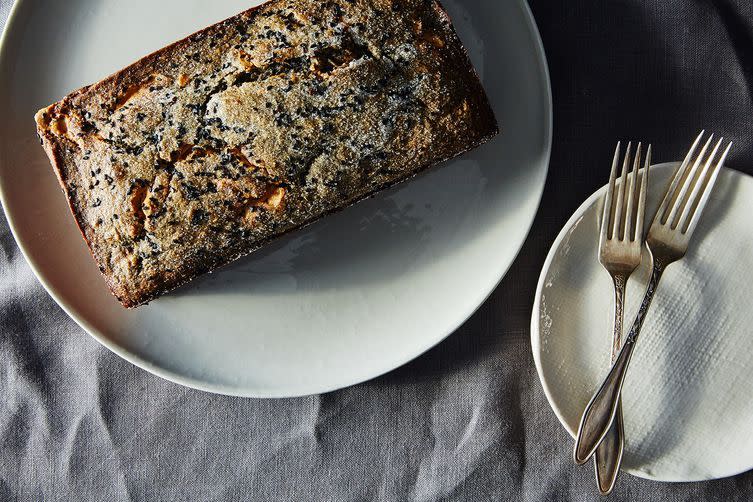
Black Sesame Banana Cake with Peanut Butter. (Photo: James Ransom)
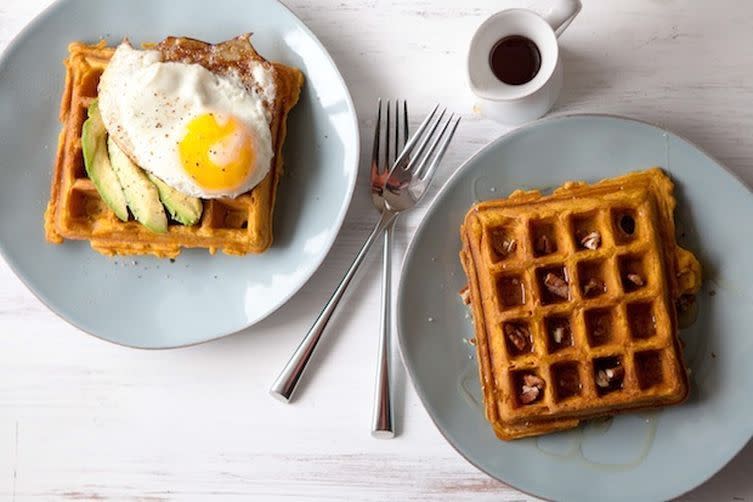
Sweet potato waffles, sweet or savory. (Photo: Emily Vikre)
Coconut Flour
What it is: Made from grinding the dried coconut meat, coconut flour has a fine, soft texture. It is rich in fiber and gluten-free and will add a slight coconut-flavor to recipes.
How to buy it: Coconut flour will generally be stocked with other alternative flours in the baking aisle or bulk bins. You can also buy it online.
How to store it: Keep coconut flour fresh by storing it in an airtight container in the refrigerator or freezer. Like other flours, it generally has a shelf-life of a year.
How to use it: When making a coating for frying or sautéing, use the same amount of coconut flour as any grain-based flour. But when baking, do not substitute coconut flour 1:1 in recipes. Coconut flour is so absorbent that you only need ¼ to 1/3 coconut flour for every 1 cup of wheat or grain flour. So when looking to give recipes like homemade naan a coconut kick, simply substitute about 20% of the wheat or grain flour with coconut flour. To combat dry and dense results, add extra liquid in the form of more eggs (or egg substitutes) and dairy or a dairy substitute (like coconut milk). As a general rule of thumb, use an equal ratio of liquid to coconut flour. Or stick to this Flourless Almond and Coconut Cake.
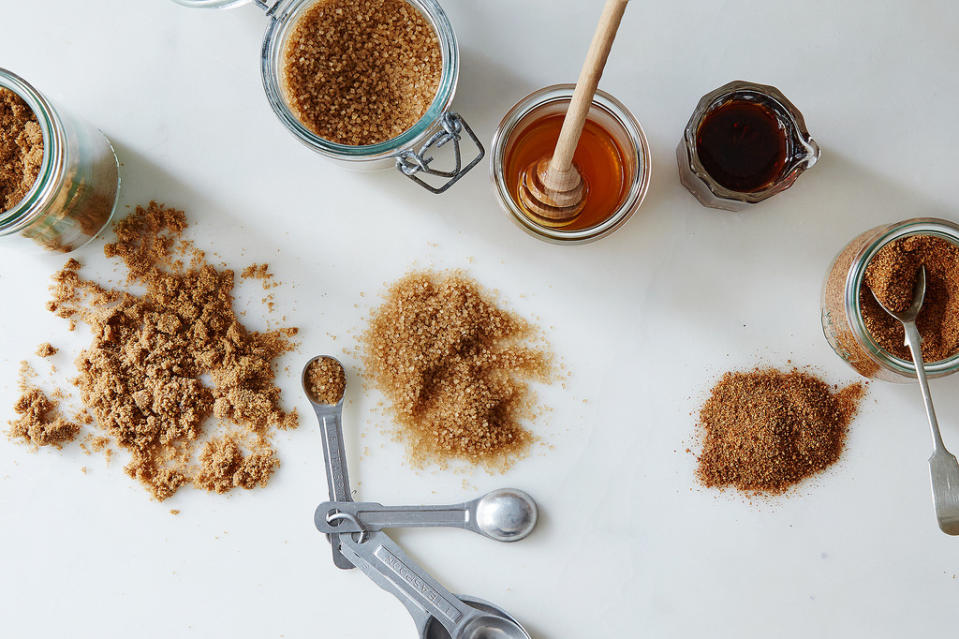
Coconut sugar is all the way on the right. (Photo: Bobbi Lin)
Coconut Sugar
What it is: Unlike the rest of the coconut products listed, coconut sugar does not come from the flesh or fluid inside of a coconut; instead, it comes from the sap of the flower buds on a coconut palm. For this reason, it does not taste like coconut, but it does provide a deeply caramel and molasses-like taste.
How to buy it: Find coconut sugar in most health food stores in the baking section near other natural, sugar alternatives—or you can buy it online.
How to store it: Once opened, coconut sugar should be kept in an airtight container or kept in a cool, dry area of the kitchen, such as a closed cupboard or pantry.
How to use it: Although you can replace white sugar 1:1 with coconut sugar, keep in mind that coconut sugar produces drier results. Stick with moisture-rich recipes, like chewy cookies, jams, and fruit-based muffins and breads and cakes.
Some recipes to try:
By Jessica Goldman Foung.

